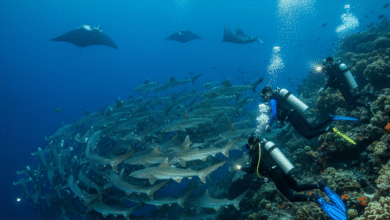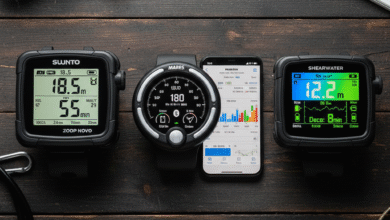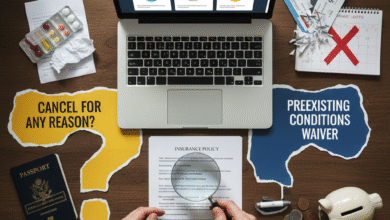The Ultimate RV Life Triple Feature: Renovation, Finance, and Destination Guide
Part 1: The Ultimate RV Renovation Guide: Appliances, Solar Power, and Off-Grid Living
The Ultimate DIY RV Renovation Guide: Solar Power, Modern Appliances, and Off-Grid Freedom
Introduction
Ready to turn your worn-out RV into the custom tiny home on wheels you’ve always dreamed of? A full RV renovation is the perfect way to make your camper truly your own, boosting its style, functionality, and most importantly, its capability for off-grid RV living. This comprehensive guide covers the three biggest game-changers in any camper remodel: energy-efficient appliances, a robust solar power system, and design tips to maximize space.
Phase 1: Planning Your Dream RV Remodel
Budgeting for the Build: How much should you allocate for materials, new RV appliances, and the crucial solar setup? A detailed budget breakdown prevents mid-project surprises.
Design & Layout: From paint colors to flooring, small changes make a huge difference. Focus on light colors to make the space feel larger and durable, lightweight materials to keep your RV safe for travel.
Demolition & Prep: Safety first! Properly remove old fixtures and ensure your rig is structurally sound before beginning new installations.
Phase 2: Powering Your Adventures: The RV Solar System
Installing RV solar panels is the single best upgrade for achieving true boondocking freedom.
Understanding Your Energy Needs: Before you buy, calculate your daily Watt-hour consumption (lights, fridge, laptops). This calculation determines your required battery bank size and the number of solar panels.
Key Solar Components:
- Solar Panels: Choose between rigid (most efficient for permanent install) and flexible (good for curved roofs). We recommend high-efficiency monocrystalline panels.
- Charge Controller: This regulates power flow from panels to batteries. Look for Maximum Power Point Tracking (MPPT) for the best efficiency.
- Inverter: Converts DC battery power to AC power for running household appliances. Tip: Choose a pure sine wave inverter for sensitive electronics.
- Battery Bank: Lithium-ion (LiFePO4) batteries are the gold standard for off-grid RV living due to their lighter weight, longer lifespan, and deep-cycle capacity.
Phase 3: The Best Energy-Efficient RV Appliances
Swapping out old, power-hungry appliances is essential for making your solar investment worthwhile.
| Appliance Category | Why Upgrade? | Recommended Feature |
| Refrigerator | The biggest power draw. | 12V Compressor Fridge (not absorption) |
| Water Heater | Traditional tank heaters waste energy. | Tankless (On-Demand) Propane/Electric |
| Air Conditioner | High energy consumption is a fact. | Soft-Start Capacitors to use with an inverter |
| Induction Cooktop | Safer and more efficient than propane burners. | Single or Double Burner Portable Induction |
Part 2: Renting vs. Buying Your First Campervan: A Financial Breakdown
Renting vs. Buying Your First Campervan: A Complete Financial Breakdown for New VanLifers
Introduction
The call of the open road is strong, but the biggest hurdle is deciding on the vehicle: should you rent a campervan for your first few trips, or commit to buying a campervan and embracing the full-time van life? The answer isn’t just about cost—it’s about usage, maintenance, and long-term financial goals.
The Case for Renting a Campervan
Renting is perfect for testing the waters, occasional travelers, or short-term road trips.
Pros:
- No Upfront Cost: Avoids the initial purchase price or a massive loan payment.
- Zero Maintenance: The rental company handles all repairs, servicing, and storage fees.
- Flexibility: Try out different models (Class B, small van, truck camper) before committing to a purchase.
Cons:
- High Long-Term Cost: Rental fees can exceed the price of ownership if you travel frequently (e.g., more than 6-8 weeks per year).
- Usage Restrictions: Mileage limits and geographical boundaries are common.
| Estimated Rental Costs | Low Season (Per Night) | High Season (Per Night) |
| Small Campervan (e.g., Dodge Promaster) | $$80 – $$150 | $$150 – $$300+ |
| Class B RV (Luxury Van) | $$180 – $$300 | $$300 – $$450+ |
The Case for Buying a Campervan
Buying is the smart choice for full-time van dwellers, frequent travelers, and those who need a custom setup (like the renovation in Part 1!).
Pros:
- Asset Building: You own an asset (though it will depreciate).
- Total Freedom: Travel whenever and wherever you want, no rental deadlines.
- Customization: You can customize every detail, from the electrical system to the layout.
Cons:
- Significant Upfront Cost: A new, converted van can cost $70,000 – $150,000+.
- Ongoing Expenses: Must factor in insurance, storage, registration, and unexpected repairs—the true cost of owning a campervan.
| Estimated Annual Ownership Costs (Beyond Loan) | Estimated Cost ($) |
| Insurance (RV Policy) | $$800 – $$2,000 |
| Maintenance & Repairs (Annual Avg.) | $$1,000 – $$3,000 |
| Registration/Taxes | $$100 – $$500 |
| Storage (If no home driveway) | $$1,200 – $$3,600 |
| Total Annual Overhead | $$3,100 – $$9,100 |
The Financial Verdict
- The Tipping Point: If you plan on taking more than two long trips (3+ weeks each) or traveling for more than 8 weeks total per year, buying a campervan will likely be the more economical choice in the long run, despite the high initial investment.
- The Trial Run: We highly recommend renting a van for a short trip first. It’s the best way to determine if the full-time van life is right for your lifestyle and budget before sinking money into a purchase.
Part 3: The Best National Park RV Resorts in the USA
The 10 Best RV Resorts and Campgrounds Near USA National Parks (Luxury & Budget Options)
Introduction
Experience the natural beauty of the USA National Parks without sacrificing the comfort of your RV. While many parks have limited, rustic campgrounds, the real gems are the private RV resorts just outside the park gates, offering full hookups, Wi-Fi, and amenities. Here are the top resorts for RV travelers seeking prime location and luxury.
Top-Rated RV Resorts by National Park
1. RV Camping Near Yellowstone National Park
- Fishing Bridge RV Park (Inside Park): The only campground in Yellowstone with full hookups. Extremely hard to book—reservations are essential 6-12 months out.
- Grizzly RV Park (West Yellowstone, MT): Rated one of the best RV resorts USA. High-end amenities, paved roads, large pull-through sites, and located just minutes from the West Entrance.
- Three Bear RV Park (West Yellowstone, MT): A great option with full hookups, good Wi-Fi, and easy access to the town’s restaurants and services.
2. Campgrounds Near Yosemite National Park
- Upper Pines Campground (Inside Park): No hookups, but the unparalleled location in Yosemite Valley makes it worth the difficult reservation process.
- Yosemite Lakes RV Resort (Groveland, CA): Offers full hookups, riverside sites, and amenities like a pool and general store. A scenic 30-mile drive to the park’s entrance.
3. RV Camping Near Zion National Park
- Zion River Resort (Virgin, UT): A true luxury RV resort with large, shaded sites, a pool, and direct shuttle service to the park entrance during peak season. A fantastic base camp.
- Watchman Campground (Inside Park): Full hookups are available in some loops. Located right at the South Entrance—book well in advance!
Booking Tips for RV Friendly National Parks
- Reserve Early: For both in-park campgrounds and the best private resorts, booking 6-12 months in advance is standard, especially for summer and fall.
- Check RV Length Limits: Many older National Park campgrounds have strict length restrictions (often 30-40 feet maximum). Always check before booking!
- Look for Boondocking (Dispersed Camping): Many parks are surrounded by National Forest or BLM land, which often allows for free off-grid camping. Use apps like iOverlander to find spots.



